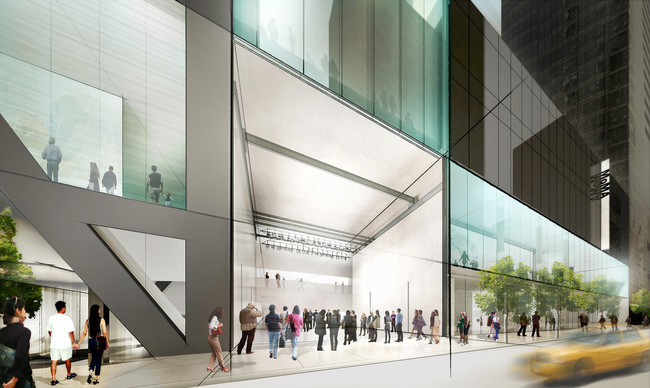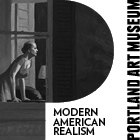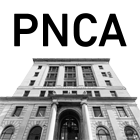
|
||
|
Portland art blog + news + exhibition reviews + galleries + contemporary northwest art
|
||
Architecture Wednesday Well, this Wednesday has dropped a ton of architecture news on us.
 MoMA's new art bay, reminiscent of a garage The biggest story is MoMA's new expansions by Diller Scofidio + Renfro. Jerry Saltz HATES it but I do see the value in the "art bays" that open like a garage to the street (they are just very timid descriptions of space considering their aims). The more problematic disappointments are the lack of expansion for the permanent collection and the intensely antiseptic white and glass design schemes that have no idiomatic texture or place making. It is institutional, with all the charm of a pharmaceutical research lab. It speaks of mall-like vernaculars + aspirations. Let's revisit the past. Perhaps, I miss spaces like Louis Kahn's Kimbell Museum of yore? Also, there are better museum architects like Renzo Piano. True, Piano does design too many museums but The Menil is astounding. Those spaces I just listed have intimacy, aspirations and yes personality. The MCA in Chicago has similar vaults to the Kimbell. I love those MCA spaces (curator Bruce Guenther was partly responsible) and its that lack of curatorial nuance that many new extensions have that leaves them unremarkable. Renzo Piano's Art Institute of Chicago wing is ok but I hate what happened to the Ab Ex area where it used to have a big scary room with Clyfford Still, Pollock and de Kooning's excavation all holding court. The "transparency" of the new design kills that mystique and MoMA seems to be another victim of the architectural language of transparency. Museums which offer nothing but generic space miss the point. They should create place, not merely space or worse, square footage. In a Museum the art holds court and staircases are mostly just there like pickled ginger to cleanse and reset the palette. I also keep thinking about how great Steven Holl's design for MoMA was and how the tanking of the Bellview Art Museum in Seattle likely cost him the gig. Holl's proposal was bold but not as radical as Rem Koolhaas' design. There was a vernacular to build upon and it retained an idiomatic aspect that was open, not merely transparent. Holl's Nelson Atkins expansion showed just how well that can work out. Somehow DS+R has lost their edge on this project. It seems very conservative... even moreso than their new Broad museum in LA or the new Whitney building to be finished on the West Side. The fact that the Williams and Tsien's folk art museum wont be saved isn't surprising... I'm certain they wanted to save it but the client's needs overrode anything truly inspired. The fact that William's and Tsien took on the Barnes collection project... essentially looting a national treasure for greater attendance only makes this karmic-ly fitting. There is always a bigger fish... will MoMA eventually swap its digs for a place where it can do it right and the current galleries will become a true mall or sports stadium? Maybe in 100 years? I'm certain it will still be packed until that day comes... but geeze New York, between the Freedom Tower and MoMA you really aren't setting the bar with your designs and places like Denver do seem more progressive. In more local news there is also an international preservationist firestorm brewing over the rightfully maligned Portland building. Now that the city council is openly considering demolition of the Portland building, it has become the single most threatened/high historical value building on the planet. As the first major Postmodernist building it was riddled with well documented flaws, like too small windows and a distinct lack of charm interior-wise. Still it is too significant to just implode and start over again. I don't want to weigh in too much here and have a more nuanced idea in the works. Still, as a city we should tread lightly. Portland often doesn't recognize the value in following up important gestures with equal or even more important gestures. Simply destroying the Portland building outright would be a missed opportunity. Same goes for the Memorial Coliseum, which has a new preservation website. Posted by Jeff Jahn on January 08, 2014 at 17:52 | Comments (0) Comments Post a comment Thanks for signing in, . Now you can comment. (sign out)
(If you haven't left a comment here before, you may need to be approved by
the site owner before your comment will appear. Until then, it won't appear
on the entry. Thanks for waiting.)
|
| s p o n s o r s |
 |
 |
 |
 |
 |
 |
 |
 |
 |
 |
 |
 |
 |
 |
 |
 |

|
Site Design: Jennifer Armbrust | • | Site Development: Philippe Blanc & Katherine Bovee | |

